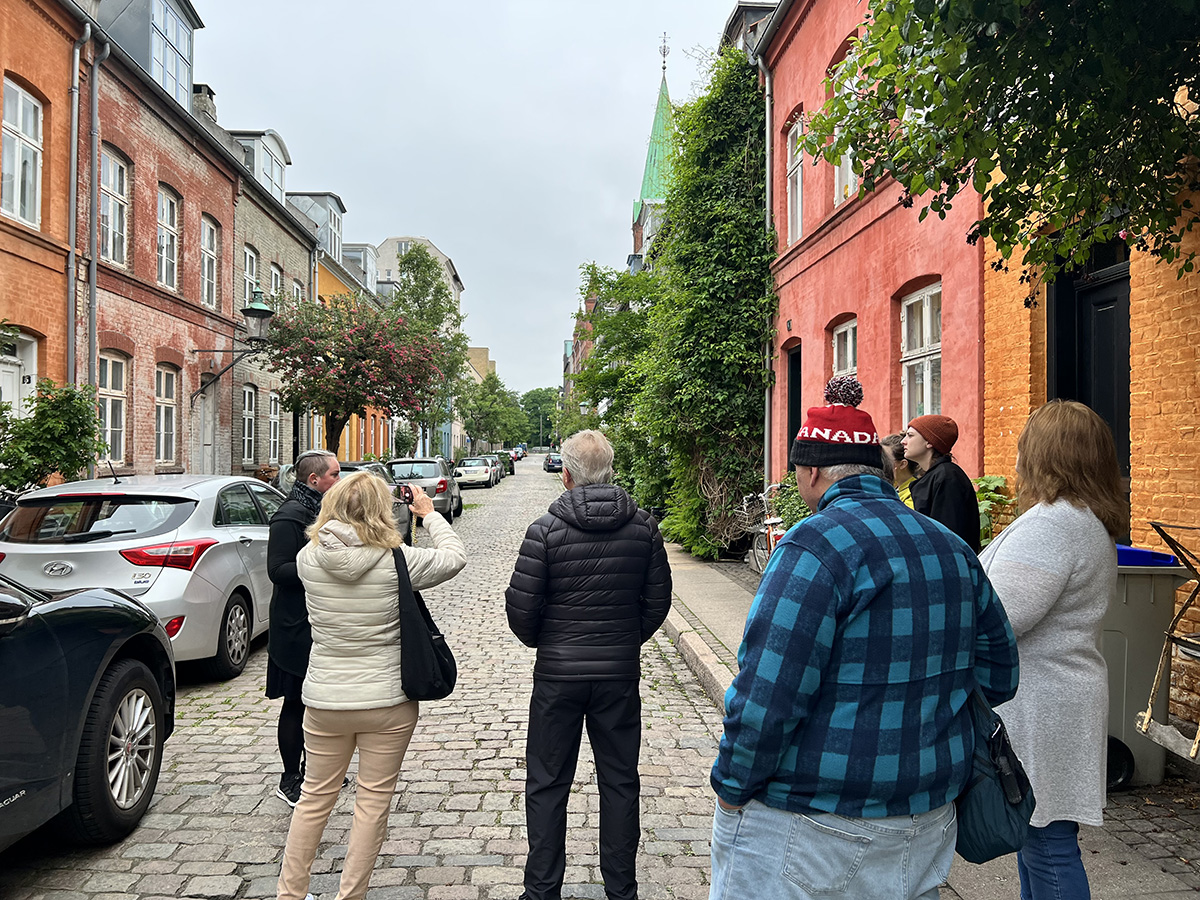While planning an upcoming trip to Denmark, tourists often stumble upon a unique Danish term important to the county’s culture: “hygge.”
With no American cultural equivalence, the concept of hygge (pronounced hoo-guh) piques the interest of tourists who want to know more about Denmark’s customs.
Why It’s Newsworthy: American travelers visiting Copenhagen, Denmark will see the word “Hygge” in many different storefronts. The United States has no cultural concept equal to hygge, nor is there a specific English definition for the term. The mystery of the concept helps Denmark attract American tourists.
“When we were researching the whole entire trip and looking at different tours, this one was interesting because of the word hygge,” said Vicky Metts, a tourist from Ellijay, Georgia. “It wasn’t really explained but sounded interesting.”
Jeppe Trolle Linnet, a Danish anthropologist and hygge expert, said that hygge became an international trend back in 2016. Denmark now uses the popular cultural concept as a strategic tourist attraction.
The data represents the interest in the term ‘hygge” as a proportion of all searches on all topics on Google at that specific time worldwide. The graphic shows a significant increase in global interest in “hygge” beginning in 2016.
“Since 2016, it [hygge] has become part of a global imagery about Denmark and sort of became a commercial success in terms for the tourism industry and for the lifestyle coaching industry as well,” Linnet said.
Books, merchandise and tours centered around hygge were created in Denmark to attract and teach tourists about this foreign term and its cultural influence.
What is Hygge?
Linnet defined hygge as an experience of being present in relation to physical places and other people. He said it is a pleasurable and relaxing feeling where someone can be free to be his/herself.
“It’s a concept that most Danes relate to and have been told that it’s central to their national character at some point in their upbringing. It’s kind of a part of our understanding of who we are as Danes,” Linnet said.
Hygge has ancient roots in a language called Old Norse, where it refers to being sheltered and giving a hug, Linnet said.
Sylvester Fogedgaard Jønsson, a tour guide for Copenhagen by Mie and Friend, shared his personal reflection of hygge and the role it has played in his life.
Demand for Hygge
After seeing the international appeal of hygge, the Danish tour company Copenhagen by Mie and Friends introduced the “Hygge and Happiness Tour” in 2017.
Lars Thoning Dybro, former co-owner of Copenhagen by Mie and Friends and creator of the company’s hygge tour, said that the company picked up on the trend of hygge and decided to play into the demand for more cultural tours in Denmark.
The “Hygge and Happiness Tour” is now the company’s best-selling and signature tour, showing tourists the “hyggelige” spots across Copenhagen while teaching them more about hygge and Denmark’s culture.
Metts said she wanted to do a tour that wasn’t centered around Denmark’s history but a more cultural one.
“I’ve seen surveys that say people here are so happy and you wonder why that is. That was kind of what drew me more to this because I thought it would give a good explanation of hygge and why they [Danes] are so happy,” Metts said.
Providing Hygge Experiences
Dybro said the “Hygge and Happiness Tour” was designed to be a small group tour that would provide guests with authentic hygge experiences.
During the tour, a local Danish tour guide leads guests down the quiet streets in Copenhagen that offer a peaceful, hygge feeling that contrasts the busy main streets in the city. The tour includes a few snack breaks for tourists to eat Danish treats and talk with one another at hyggelige coffee shops.
“It [the tour] is trying to physically show and tell things considered hygge to try to convey the feeling to people visiting Denmark and who want to know more,” Jønsson said.
Metts said that the tour allowed her to understand the concept of hygge better and see the differences between Danish and American culture.
“To me, it [hygge] is just being more chill, more relaxed and not so rushed,” Metts said. “We [Americans] don’t take the time to stop and enjoy, and I think that’s what it seems they do here more.”
When their trip to Denmark ends, tourists who have learned about the concept of hygge can take the knowledge back home with them and implement hygge into their own lives.
Megan Fitzgerald is a senior majoring in Journalism at the University of Georgia.








Show Comments (2)